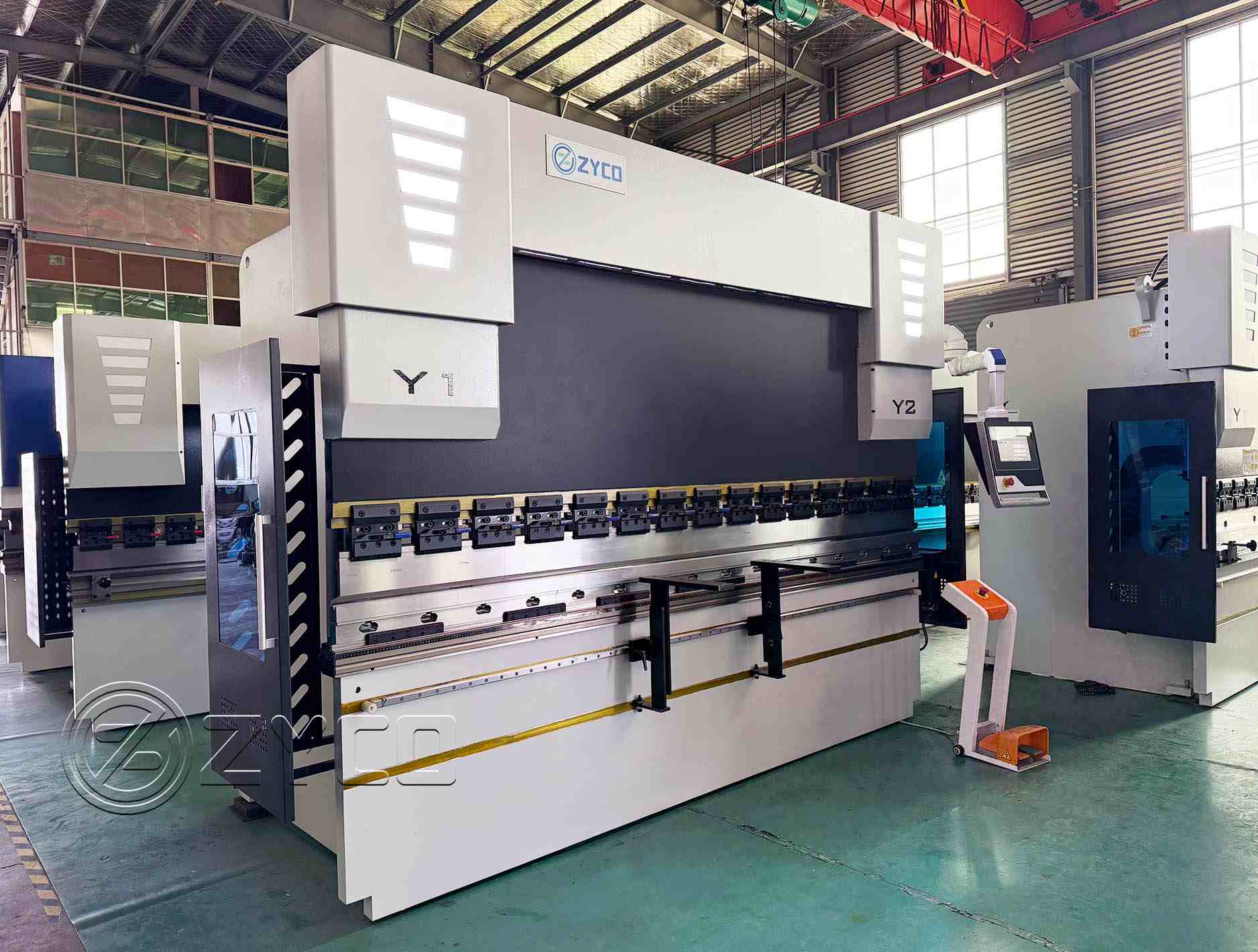Com o rápido desenvolvimento da indústria de manufatura, a tecnologia de processamento de metais tem sido continuamente aprimorada. Como um equipamento de dobra de metais eficiente e preciso, Máquina de dobra CNC tornou-se uma ferramenta importante na produção industrial. Este artigo apresentará em detalhes o que é Máquina de dobra CNC, bem como seu princípio de funcionamento, principais componentes e áreas de aplicação.
O que é máquina de dobra CNC?
A máquina de dobra CNC é uma equipamento de dobra de chapas metálicas Controlado por um sistema CNC. É usado principalmente para dobrar chapas metálicas de acordo com ângulos e formas pré-determinados. As dobradeiras tradicionais dependem de operação manual, enquanto as dobradeiras CNC controlam o processo de dobra por meio de programas de computador, o que melhora a precisão do processamento e a eficiência da produção.
O núcleo da dobradeira CNC é o seu sistema CNC, que pode ser usado para programar e controlar com precisão os principais parâmetros do processo de dobra (como ângulo de dobra, posição de dobra, pressão, etc.). Comparada à dobra manual tradicional, a dobradeira CNC apresenta as seguintes vantagens significativas:
1. Alta precisão: Ele pode atingir precisão de dobra em nível de mícron para garantir a qualidade do produto.
2. Alta eficiência: Reduza a intervenção manual e aumente a velocidade de processamento.
3. Forte flexibilidade: pode processar produtos metálicos com formas complexas.
4. Alto grau de automação: reduzir a dificuldade de operação e reduzir erros humanos.
Como funciona uma máquina de dobra CNC?
O princípio de funcionamento de uma prensa dobradeira CNC inclui principalmente as seguintes etapas:
1. Programação e entrada de dados
O operador insere o programa de processamento da dobradeira por meio do sistema CNC. Esses programas geralmente são baseados em desenhos de projeto do produto e contêm as seguintes informações importantes:
- Material e espessura da chapa;
- Ângulo de curvatura;
- Sequência de flexão;
- Seleção de ferramentas (tipo de matriz superior e inferior).
Os sistemas CNC modernos suportam importação direta de arquivos de design 3D (como arquivos CAD) e podem calcular automaticamente os parâmetros do processo de dobra, reduzindo bastante o tempo de programação.
2. Posicionamento e fixação
Após a configuração do programa, o sistema de batente traseiro da dobradeira CNC ajustará automaticamente a posição para fixar a chapa metálica na posição correta. O sistema de batente traseiro é acionado por um motor e pode se mover com precisão para garantir a posição de dobra precisa da chapa metálica.
O dispositivo de fixação fixa a folha hidraulicamente ou mecanicamente para evitar deslocamento durante o processamento.
3. Ação de flexão
A ação de dobra é acionada pelo sistema hidráulico ou servomotor da máquina de dobra, que aciona as matrizes superior e inferior para se moverem:
Matriz superior: geralmente uma ferramenta em forma de cunha usada para aplicar pressão à chapa metálica.
Matriz inferior: geralmente possui diferentes entalhes para apoiar a chapa metálica e formar o ângulo de curvatura final.
A chapa metálica é comprimida entre as matrizes superior e inferior, resultando em deformação plástica para formar o ângulo e o formato desejados.
4. Feedback e ajuste
O sistema CNC monitora a pressão, o ângulo e a posição durante o processo de dobra em tempo real e envia os dados por meio de sensores. Caso seja encontrado algum erro, o sistema ajusta automaticamente os parâmetros de dobra para garantir que o produto final atenda aos requisitos do projeto.
Principais componentes de Máquina de dobra CNC

A máquina de dobra CNC consiste nas seguintes peças principais:
1. Sistema CNC (controlador CNC)
Este é o "cérebro" da prensa dobradeira CNC, responsável por receber e processar instruções de operação e controlar a operação do equipamento. Marcas comuns de sistemas CNC incluem Siemens, Fanuc, etc.
2. Sistema hidráulico
Usado para gerar a pressão necessária para a dobra. O sistema hidráulico impulsiona o movimento do pistão através do óleo hidráulico, acionando assim o molde para completar a ação de dobra.
3. Estrutura mecânica
Inclui peças como a estrutura, a matriz superior, a matriz inferior e a bancada. Esses componentes fornecem suporte estável e transmitem pressão para a operação de dobra.
4. Sistema de calibre traseiro
Utilizado para posicionar a chapa metálica e garantir a precisão da posição de dobra. O sistema de batente traseiro geralmente é acionado por um servomotor e pode alcançar movimentos de alta precisão.
5. Sensores e dispositivos de feedback
Usado para monitorar parâmetros-chave no processo de dobra, como ângulo, pressão e posição, para garantir a precisão do processamento.
Áreas de aplicação de máquinas de dobra CNC
As máquinas de dobra CNC são amplamente utilizadas nas seguintes indústrias:
1. Processamento de chapas metálicas: como chassis, gabinetes, invólucros de eletrodomésticos, etc.
2. Fabricação de automóveis: como processamento de estruturas e peças de carroceria.
3. Aeroespacial: dobra de peças metálicas com requisitos de precisão extremamente altos.
4. Indústria da construção: como a produção de paredes-cortina metálicas e componentes de estruturas de aço.
5. Indústria de eletrodomésticos: como o processamento de máquinas de lavar e carcaças de refrigeradores.
6. Equipamentos de cozinha: como fornos, vaporizadores de arroz, etc.
Conclusão
Como um equipamento importante para o processamento moderno de chapas metálicas, as máquinas de dobra CNC tornaram-se as principais ferramentas na produção industrial com suas vantagens de alta eficiência, alta precisão e automação. Através do controle preciso do sistema CNC, as máquinas de dobra CNC podem facilmente lidar com requisitos de processamento complexos e fornecer forte suporte para a automação e o desenvolvimento inteligente da indústria de manufatura.
No futuro, com a integração das tecnologias de inteligência artificial e Internet das Coisas, as máquinas de dobra CNC aumentarão ainda mais seu nível de inteligência e trarão mais possibilidades à produção industrial.
Deixe seu endereço de e -mail e requisitos, nossa equipe de vendas profissional desenvolverá a solução mais adequada para você.
Direitos autorais
© 2025 Nanjing Zyco CNC Machinery Co., Ltd. Todos os direitos reservados
.
 SUPORTADO POR REDE
SUPORTADO POR REDE